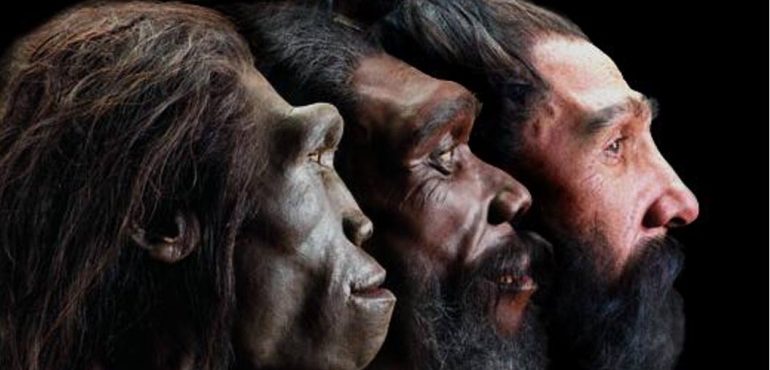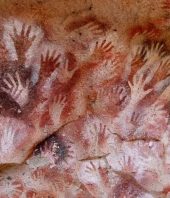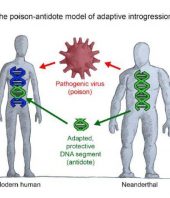Most of us think of Europe as the ancestral home of white people. But a new study shows that pale skin, as well as other traits such as tallness and the ability to digest milk as adults, arrived in most of the continent relatively recently. The work, presented here last week at the 84th annual meeting of the American Association of Physical Anthropologists, offers dramatic evidence of recent evolution in Europe and shows that most modern Europeans don’t look much like those of 8000 years ago.
The origins of Europeans have come into sharp focus in the past year as researchers have sequenced the genomes of ancient populations, rather than only a few individuals. By comparing key parts of the DNA across the genomes of 83 ancient individuals from archaeological sites throughout Europe, the international team of researchers reported earlier this year that Europeans today are a mix of the blending of at least three ancient populations of hunter-gatherers and farmers who moved into Europe in separate migrations over the past 8000 years. The study revealed that a massive migration of Yamnaya herders from the steppes north of the Black Sea may have brought Indo-European languages to Europe about 4500 years ago.
Now, a new study from the same team drills down further into that remarkable data to search for genes that were under strong natural selection—including traits so favorable that they spread rapidly throughout Europe in the past 8000 years. By comparing the ancient European genomes with those of recent ones from the 1000 Genomes Project, population geneticist Iain Mathieson, a postdoc in the Harvard University lab of population geneticist David Reich, found five genes associated with changes in diet and skin pigmentation that underwent strong natural selection.
First, the scientists confirmed an earlier report that the hunter-gatherers in Europe could not digest the sugars in milk 8000 years ago, according to a poster. They also noted an interesting twist: The first farmers also couldn’t digest milk. The farmers who came from the Near East about 7800 years ago and the Yamnaya pastoralists who came from the steppes 4800 years ago lacked the version of the LCTgene that allows adults to digest sugars in milk. It wasn’t until about 4300 years ago that lactose tolerance swept through Europe.
When it comes to skin color, the team found a patchwork of evolution in different places, and three separate genes that produce light skin, telling a complex story for how European’s skin evolved to be much lighter during the past 8000 years. The modern humans who came out of Africa to originally settle Europe about 40,000 years are presumed to have had dark skin, which is advantageous in sunny latitudes. And the new data confirm that about 8500 years ago, early hunter-gatherers in Spain, Luxembourg, and Hungary also had darker skin: They lacked versions of two genes—SLC24A5 andSLC45A2—that lead to depigmentation and, therefore, pale skin in Europeans today.
But in the far north—where low light levels would favor pale skin—the team found a different picture in hunter-gatherers: Seven people from the 7700-year-old Motala archaeological site in southern Sweden had both light skin gene variants, SLC24A5 and SLC45A2. They also had a third gene,HERC2/OCA2, which causes blue eyes and may also contribute to light skin and blond hair. Thus ancient hunter-gatherers of the far north were already pale and blue-eyed, but those of central and southern Europe had darker skin.
Then, the first farmers from the Near East arrived in Europe; they carried both genes for light skin. As they interbred with the indigenous hunter-gatherers, one of their light-skin genes swept through Europe, so that central and southern Europeans also began to have lighter skin. The other gene variant, SLC45A2, was at low levels until about 5800 years ago when it swept up to high frequency.
The team also tracked complex traits, such as height, which are the result of the interaction of many genes. They found that selection strongly favored several gene variants for tallness in northern and central Europeans, starting 8000 years ago, with a boost coming from the Yamnaya migration, starting 4800 years ago. The Yamnaya have the greatest genetic potential for being tall of any of the populations, which is consistent with measurements of their ancient skeletons. In contrast, selection favored shorter people in Italy and Spain starting 8000 years ago, according to the paper now posted on the bioRxiv preprint server. Spaniards, in particular, shrank in stature 6000 years ago, perhaps as a result of adapting to colder temperatures and a poor diet.
Surprisingly, the team found no immune genes under intense selection, which is counter to hypotheses that diseases would have increased after the development of agriculture.
The paper doesn’t specify why these genes might have been under such strong selection. But the likely explanation for the pigmentation genes is to maximize vitamin D synthesis, said paleoanthropologist Nina Jablonski of Pennsylvania State University (Penn State), University Park, as she looked at the poster’s results at the meeting. People living in northern latitudes often don’t get enough UV to synthesize vitamin D in their skin so natural selection has favored two genetic solutions to that problem—evolving pale skin that absorbs UV more efficiently or favoring lactose tolerance to be able to digest the sugars and vitamin D naturally found in milk. “What we thought was a fairly simple picture of the emergence of depigmented skin in Europe is an exciting patchwork of selection as populations disperse into northern latitudes,” Jablonski says. “This data is fun because it shows how much recent evolution has taken place.”
Anthropological geneticist George Perry, also of Penn State, notes that the work reveals how an individual’s genetic potential is shaped by their diet and adaptation to their habitat. “We’re getting a much more detailed picture now of how selection works.”
Source: AAAS, Full Article







